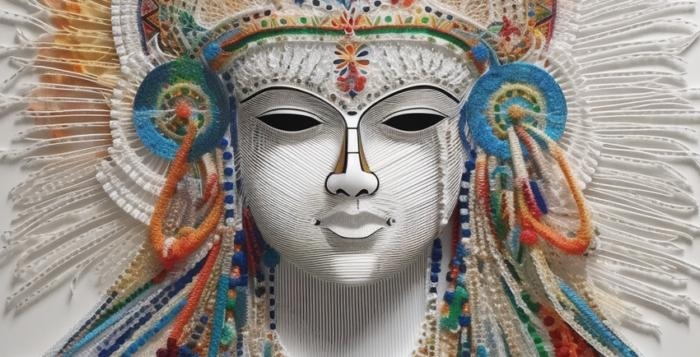Art Meets Math in Symmetrical String Art

When Art and Math Collide: A Beautiful MessWhere there is art, there is math. Where there is math, there is art. It's like a symbiosis of two seemingly opposite things, like peanut butter and jelly, or politicians and honesty. But in the case of symmetrical string art, the marriage of the two brings forth an array of aesthetically pleasing geometric shapes and patterns that can make even the staunchest math-hater admire the beauty of numbers. So gear up for the mathematical rollercoaster that is string art, and hold on to your protractors, folks, because this is going to be one wild ride.
String Theory for the Artistically InclinedAlright, so maybe this isn't exactly the same as the mind-bending, reality-questioning string theory of theoretical physics. However, the concept of string theory does have one thing in common with symmetrical string art: they both involve strings. In the case of string art, the strings are brought together in harmony, woven into intricate patterns and shapes, creating a visual representation of mathematical concepts. It's like your high school geometry teacher decided to throw a rave, and the only invitees were a protractor, a ruler, and a couple hundred yards of string.
The Birth of Symmetrical String Art: A PrimerString art really took off in the 1960s and 1970s when people had the brilliant idea of combining math with art to make some really groovy designs. The concept of string art has been around for centuries, but this particular style was popularized by John Eichinger, an American mathematics teacher. He introduced string art as a way to teach geometric concepts, and it quickly gained traction as a creative and engaging learning tool. Little did he know that by combining the power of mathematics with the emotional resonance of art, he'd create a monster of creativity that would captivate the hearts and minds of generations to come.
The Tools of the Trade: A Lesson in GeometryTo make symmetrical string art, you'll need a few essential items:
- A sturdy base (wood, foam, or cardboard)
- Nails or pins to create anchor points
- String or thread of your choice
- A ruler, protractor, and compass for precise measurements
- A design in mind or a pattern to follow
- Patience, and maybe a stiff drink
With these tools in hand, you can start creating your masterpiece. First, you'll need to map out your design by plotting the points on your base with the help of your ruler and protractor. The more points you plot, the more intricate your design will become. The key to symmetrical string art is to make sure your points are evenly spaced, as this will ensure that your final design is as balanced and aesthetically pleasing as a zen garden.
Stringing You Along: The Art of CreationOnce your points are plotted and your base is prepped, it's time to get down to the business of stringing. This is where the magic happens, and your design comes to life. Starting at one point, wrap your string around another point, then continue to the next point, and so on. The trick is to maintain a consistent tension in the string, as this will create sharp, clean lines in your design. It's like playing connect the dots, except you're only using string and a bit of mathematical know-how.
Getting Creative: It's All in the DetailsThe beauty of symmetrical string art is that you can create an infinite number of designs by simply adjusting the number of points or the way you string them together. Want to create a bold, geometric masterpiece that could rival the likes of Picasso? Try using thicker string or multiple colors. Feeling more of a minimalist, monochromatic vibe? Stick with a single string color and thinner string.
You can also experiment with different shapes and sizes for your base, as well as incorporating additional elements like beads or other embellishments to make your design truly one-of-a-kind. The possibilities are as limitless as the number of digits in pi (which, if you'll recall from your high school math days, is quite a lot).
In Conclusion: Stringing It All TogetherSo there you have it: the wonderful world of symmetrical string art. By blending art and math in a harmonious union, these captivating designs serve as a testament to the beauty that can arise from the collision of seemingly disparate concepts. In a world where division and discord seem all too common, let us take solace in the fact that sometimes, the most beautiful things can come from the unlikeliest of pairings. And who knows? Maybe someday, we'll find a way to unite other seemingly incompatible things, like Congress and compromise, or pineapple and pizza. But until then, we'll always have string art.
|
|







